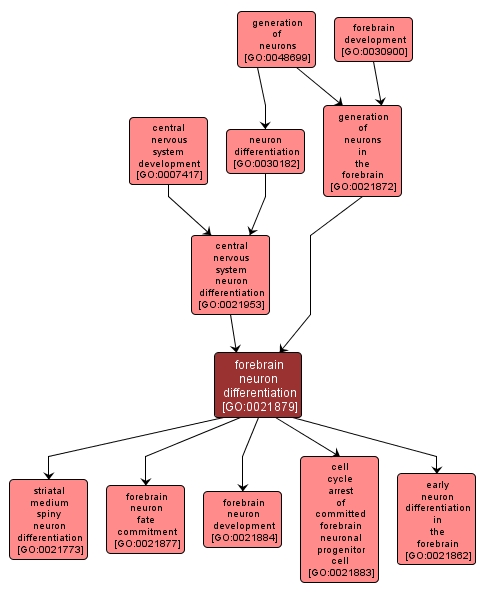GO TERM SUMMARY
|
| Name: |
forebrain neuron differentiation |
| Acc: |
GO:0021879 |
| Aspect: |
Biological Process |
| Desc: |
The process whereby a relatively unspecialized cell acquires specialized features of a neuron that will reside in the forebrain. |
|

|
INTERACTIVE GO GRAPH
|














